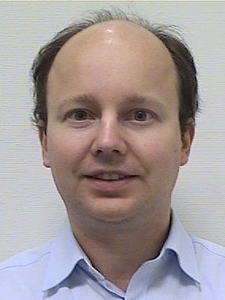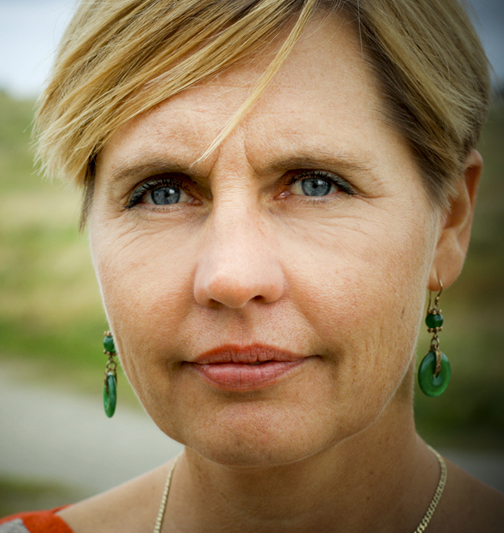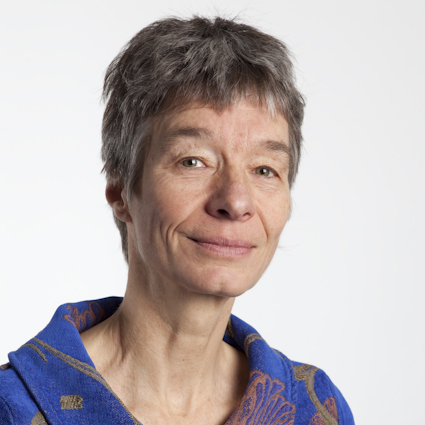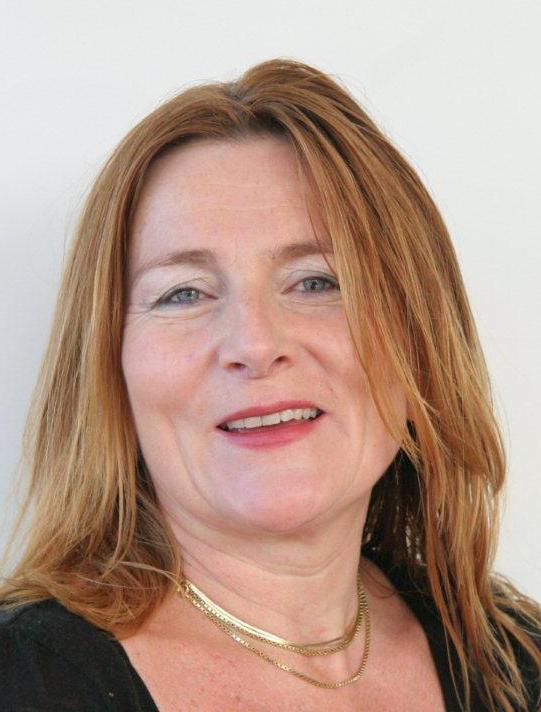Have we already achieved gender balance?
The foundation has already been laid for gender balance at the senior level of academia, according to an associate professor of finance. However, critics say it’s risky to sit back and wait for gender balance to happen on its own.
Over half of Norway’s students and doctoral research fellows are women, and gender balance among assistant professors and associate professors is about even.
A predominance of men at the professor level – 74 percent men versus 26 percent women – is the last male bastion that reminds us that we have not yet reached full equality in academia and that we still have a long way to go. Or is that really the case?
Give it time?
According to Helge Nordahl, Associate Professor at Oslo and Akershus University College and the Norwegian School of Economics, the reason the achieved gender balance in academia is not reflected at the senior level is simple – and this reason is not discrimination.

Nordahl published the blog post titled “The reason 3 of 4 professors are men” in which he challenges the idea that structural inequalities or preferential treatment are the cause of continued male dominance at the top level.
“The professors did not complete their doctorate yesterday. They are instead a group of those who got their doctorate many years ago,” writes Nordahl. He then presents an analysis showing that the percentage of men at the professor level today largely reflects the percentage of men who completed their doctorate 18 years ago.
Since gender balance in now about even at the doctoral level, we can assume that this will also be reflected over time at the professor level, according to Nordahl, who also predicts that we will have more than 40 percent female professors in 2025.
Is Nordahl right? Have we really achieved gender equality in Norwegian academia – except that it will take time before we see this reflected at the professor level?
Nothing automatic
“I would say Nordahl is right about one thing which we actually need to take into account when debating gender balance in academia, and that is that the recruitment pool here is much better than in other sectors,” says Mari Teigen of the Institute for Social Research.
“Especially compared to the top level of trade and industry – where there are far fewer women to choose from farther down in the organization than in academia. So in this sense, we could say we’re in a good position. But it’s not an automatic that the numbers move upward in the system. There is much to suggest that we need to do more than just give it time and the job will get done,” she says.
Teigen is Deputy Director of the Institute, as well as Research Director of CORE – Centre for Research on Gender Equality. She is also one of the researchers working with a large-scale project on gender segregation in the labour market, which runs until 2018.
“There is genuine selection as one moves up towards the professor level, and it gets tougher the higher up you go. That’s the way it should be,” she says.
“The question is what criteria are being used and whether these criteria are biased so that women have to work harder than men. We will hardly benefit if we stop asking these questions,” says the researcher.
Nordahl’s blog post is based on an article in Ukeavisen Ledelse in which the KIF Committee’s Chair and Rector of Nordahl’s own institution, Curt Rice, says the reason for the imbalance at the top is mainly that women must meet tougher requirements than men and that women must produce more to have a chance to be assessed on equal terms.
Rice refers to studies conducted in Sweden and Spain which confirm that women are evaluated harder than men – by both men and women on evaluation committees.

There are no similar studies of the promotion and evaluation process that Norwegian researchers undergo. The fact that Norwegian, female academics find it harder to establish a research career than their male colleagues is shown in the study of researchers’ time use, carried out by Cathrine Egeland and Ann Cecilie Bergene in 2012. A major reason for this is that much of the career-building activity, such as preparing grant applications and writing articles for publication, takes place outside normal work hours – and this is a disadvantage for women.
Teigen believes it’s well documented that women’s career development goes more slowly than men’s for a variety of reasons.
“We can’t ignore the knowledge we have about career obstacles. However, it’s worth mentioning that a knowledge-driven debate on gender equality must take into account that the recruitment pool is better today than it was 20 years ago, so in that sense Nordahl has a point. But it doesn’t mean we should expect that the numbers will automatically flow upwards to senior-level positions. We must continue to analyse what is required, how the recruitment process works, and to what degree the qualification requirements are gendered,” says Teigen.
Agnete Vabø, Research Professor at the Nordic Institute for Studies in Innovation, Research and Education, agrees with Teigen. She points out that the disconnection between numbers at the lower and higher levels has already been proven.
“In many instances, the percentage of female professors in an academic field does not necessarily reflect the percentage of women among doctoral candidates in that same field over time,” explains Vabø.
“The professors in clinical medicine are one example of this – only 21 percent are women, despite the fact that medicine has had a high percentage of female students and doctoral candidates for many decades.”
Academic field more important than gender
Hege Torp, Department Director at the Research Council of Norway, thinks it’s important that we don’t make inequality at the top an “either/or question”.
“It’s too simple to say that male dominance can be explained either with discrimination or with a mathematical calculation. So if we weigh Rice’s argument against Nordahl’s, I would say that both are correct to some extent,” says Torp, who heads the Research Council’s Department for Strategic Development and Analysis.

“Nordahl has a point when he says we must look at the recruitment pool – it’s clear that this changes over time. There will be better balance over time, but this doesn’t automatically mean that time will solve all problems. At the Research Council we are concerned with achieving gender balance and diversity, also at the senior level,” says Torp.
“Of course Rice also has a point when he refers to factors relating to environmental support – that is, framework conditions consisting of academic supervisors, mentors, career counselling, self-confidence and motivation. Career development also entails factors such as these, not just numbers. It’s also important to remember that there are large variations between fields when it comes to the number of postdocs per professors – and thus the chance to obtain a permanent position.”
A report from 2015 shows that academic field is the most significant factor by far for the career path from a post-doctoral research fellowship to a permanent position in Norwegian academia and that gender is less significant for career development than first assumed. The report’s authors conclude that gender is less significant for the chances of post-doctoral research fellows to obtain a permanent academic position than what we previously believed (see fact box).
“Must continue to be aware”
In other words, the report’s conclusions largely support Helge Nordahl’s analysis. At the same time, we know that women’s path to the top is filled with gender-based expectations and framework conditions that make career development more difficult. Agnete Vabø, who works for the same institution as the report’s authors, notes that the study covers only a small portion of all academics who are in an advanced recruitment phase, since post-doctoral research fellows are a selected group.
“Given the slow growth in the percentage of female professors in many fields, it appears that the critical factor continues to be slower career development among female researchers, both during and after their doctoral education,” she says.
However, the foundation for gender equality in research has never been better, according to Vabø.

“Just as many women as men are pursuing doctorates. In addition, we see a relatively strong commitment both politically and institutionally to facilitate women’s research careers – through measures such as mentoring schemes and qualification grants.”
Vabø emphasizes that there is no reason to abandon this awareness around gender equality right away.
“We must continue to be aware of which research policy measures promote or impede women’s chances for ending up on a solid career path, and thus also for getting hired in senior-level academic positions,” she says.
“Soon it will be men who need to be recruited”
“Is it time to sit back and declare that gender equality has been achieved before it’s happened at the professor level, Helge Nordahl?”
“In my view, there is no reason to believe that women will have less of a chance than men to reach the senior level in the future. Given today’s high percentage of women in the most demanding study programmes, it’s just as likely that in 15 to 20 years we’ll be discussing how we can bring more men into research,” says Nordahl.
“Regarding specific gender equality measures, it’s hard to say in general what needs to be continued or not. Some will become redundant over time, but I also think many measures can be continued in a progressively more gender-neutral form. Quite simply, it’s good personnel management, regardless of gender. But the academic fields are very different and will require different measures,” he says.
“What do you think about the framework condition mentioned by others such as Hege Torp –factors that can’t be explained only with numbers and that she refers to as environmental support?”
“Of course I don’t disagree with Hege Torp in that it’s important to give guidance and support to young doctoral candidates in academia, both women and men. Large segments of academia have a lot to improve on in this regard,” says Nordahl.
Almost balanced in 2025?
According to Nordahl’s analysis, the percentage of women at the professor level will exceed 40 percent in 2025. Is this likely?
“That’s hard to answer, and it’s not long until 2025,” says Mari Teigen, who also points out that there are large variations across academic fields:
“We may very well exceed 40 percent, but there will probably continue to be large variations among fields in 2025. This will likely be the greatest challenge – ensuring balance between the various fields.”
Hege Torp thinks it’s unlikely that the gender differences will be evened out in nine years from now.
“It’s too simple to base this only on mathematics and statistics. It’s hard to believe that the difference will be gone in just nine years – either due to preferential treatment of women and men or because women and men make different choice in certain situations,” she says.
Translated by Connie Stultz.
At kifinfo we publish news articles about what improves and deters gender balance and diversity in research.
See the links to some of these articles, and read more in our news magazine. You can also read the interview with Curt Rice and Helge Nordahl’s blog post (in Norwegian only) which this article is based on.
Web resources
Helge Nordahl’s blog post (in Norwegian only)
Iinterview with Curt Rice (in Norwegian only)
Report on post-doctoral research fellows
The report “The road from postdoc to academia”, prepared by NIFU on commission from the Research Council of Norway, takes its point of departure in all registered post-doctoral research fellows in Norway in 2001, 2005 and 2009, and follows the career development of these three classes up to 2013. While 60 percent of the post-doctoral research fellows in the humanities and social sciences had found permanent positions over the course of eight years, the corresponding figure for mathematics, natural sciences and technology was 20 percent.
However, the gender dimension showed much more even numbers: In the report’s sample, six percent of female postdocs and six percent of male postdocs had been hired in a professor position five to six years after they were registered as a postdoc. The percentage of postdocs who had found a permanent position in academia over the course of five to six years was also the same for women and men: 23 percent.
Uncovered gender discrimination in Sweden
Two reports from Sweden have shown that gender is a factor that affects the outcome when committees assess quality. Read the reports “Peer evaluation of scientific quality – a review of the research” and “His Excellency: billion kroner investment in elite research environments” (in Swedish only) at the link below.
Agnes Wold and Christine Wennerås generated enormous interest in this topic with their 1997 article in Nature on sexism and nepotism in Sweden. They uncovered that a female researcher at the former Medical Research Council had to produce more than twice that of a man to be evaluated as equally competent.
The report “The road from postdoc to academia” (in Norwegian only)
“His Excellency: billion kroner investment in elite research environments” (in Swedish only)
“Peer evaluation of scientific quality – a review of the research” (in Swedish only)

